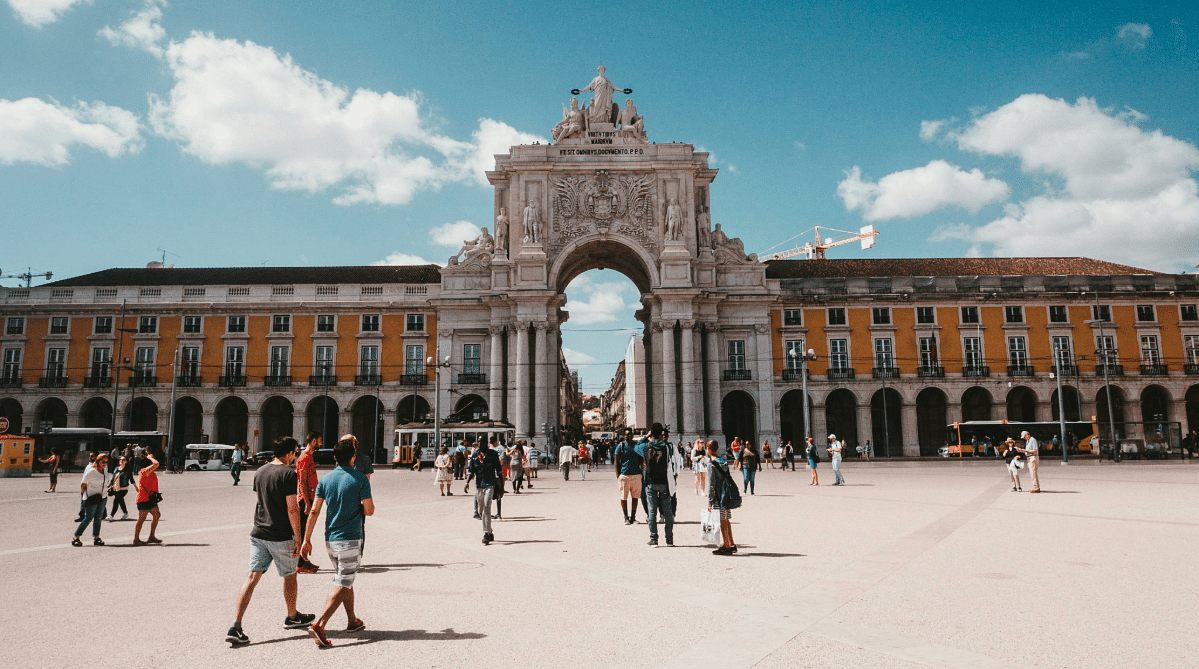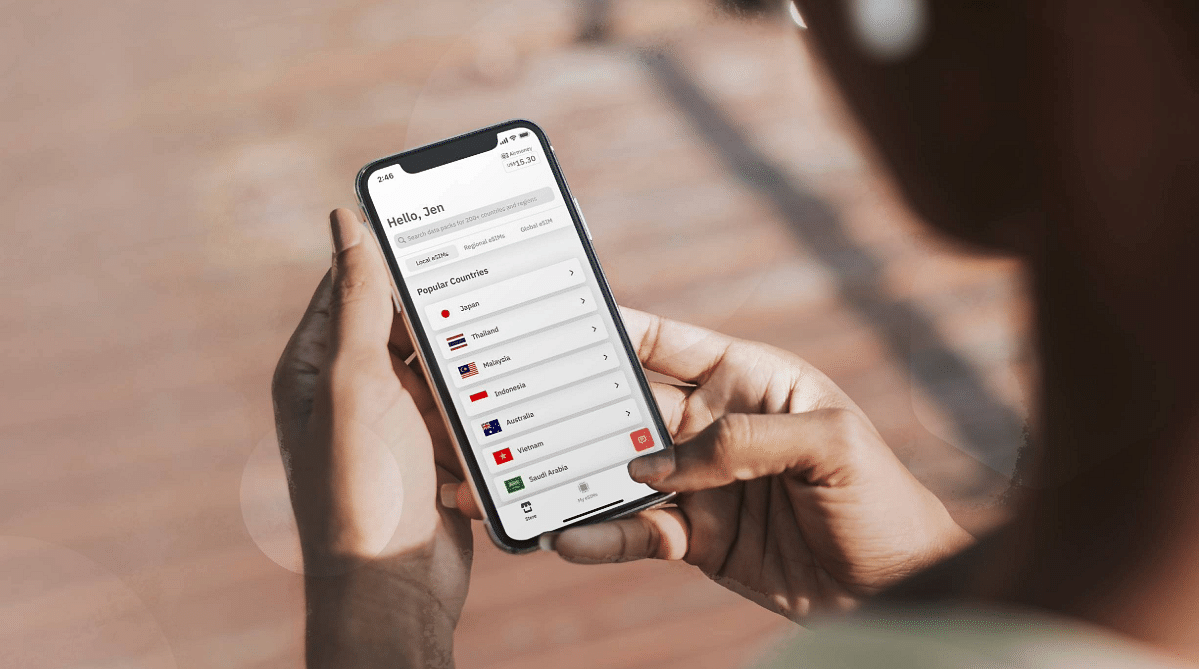
Portugal is known for its beautiful beaches, rich cultural heritage, and delicious cuisine. It's no surprise that many digital nomads seek a visa to live and work in this beautiful country! Luckily, there are a few different choices for a Portugal digital nomad visa. Keep reading to discover everything we know regarding how to live and work in Portugal, including types of visas, eligibility requirements, and, of course, how to apply for a Portugal visa.
In this article:
- Types of Digital Nomad Visas in Portugal
- How to apply for a Digital Nomad Visa in Portugal
- How much does a Temporary-Stay Visa cost?
- How digital nomads can stay connected using an eSIM
Related: The 6 Best Digital Nomad Destinations of 2024 (And Everything You Need to Know to Move There)
 Unsplash
Unsplash
Types of Digital Nomad Visas in Portugal
Want to live and work in Portugal? Luckily, there are five types of visas: the Temporary-Stay Visa, the D7 Passive Income Visa, the D2 Entrepreneur Visa, the Portugal Golden Visa, and the Short-Stay Tourist Visa. Each visa offers different requirements and provides unique benefits. Since the Temporary-Stay Visa is specifically targeted at digital nomads in Portugal and is arguably the best digital nomad visa available, this article will focus mostly on this option, but we'll also explain alternative digital nomad visa options.
Temporary-Stay Visa
This new Portugal digital nomad visa is an excellent choice for digital nomads working remotely from Portugal. It's targeted at digital nomads, and as long as workers make at least US$3,004 (€2,800) a month, digital nomads with a Temporary-Stay Visa can live and work in Portugal for up to five years. The initial visa lasts for 120 days, at which time one can register at the Servico de Estangeiros e Fronteiras as a temporary resident.
As a bonus, digital nomads in Portugal with this visa pay a 15% tax (compared to the traditional 25% tax rate for Portuguese) for the first four years.
Further requirements for the Temporary-Stay Visa include a clean criminal record and proof of planned accommodation in Portugal for a year. Visa holders must also get a Portuguese NIF (Numero de Identificao Fiscal). This is required to pay taxes in Portugal, open a bank account, purchase property, obtain internet contracts, and make online purchases. After receiving the NIF, visa holders must also open a Portuguese bank account before completing and submitting their residency application. Furthermore, digital nomads must have health insurance for the first four months. Coverage must be US$32,183 (€30,000) per person. Once the residence permit is received, there are various health insurance options to choose from.
D7 Passive Income Visa
Can you provide proof of independent income? If so, this might be the right option. Digital nomads can stay up to two years with the D7 Passive Income Visa. Originally meant for retirees, today's digital nomads can also benefit from this visa. Initially, the visa is granted for 120 days. During this time, digital nomads must go to the Servico de Estangeiros e Fronteiras (SEF), where they can receive a two-year residence permit.
Are you a digital nomad traveling with children? If so, this visa covers a spouse and any dependent children. The only catch is that digital nomads must prove they make US$9,075 (€8,460) annually. An accompanying spouse requires an additional 50% per year. Each dependent child requires an extra 30% per year.
D2 Entrepreneur Visa
The D2 Entrepreneur Visa is best for those seeking permanent residence with plans to invest in the Portuguese economy. Do you have a company operating in Portugal, or are you planning to set up a company? While the D2 Entrepreneur Visa doesn't have a financial requirement, entrepreneurs must have a valid business plan that details the company's potential impact on the local economy.
With the D2 Entrepreneur Visa, digital nomads in Portugal can open bank accounts and transfer tax residency to Portugal. After an initial 120 visa period, residency permits are granted for five years, upon which time digital nomads can apply for permanent residence, followed by citizenship.
Seeking eligibility for a Portugal digital nomad visa? This one requires a minimum yearly salary of US$9,075 (€8,460). Entrepreneurs also have the option to bring family with them.
Portugal Golden Visa
Similar to the D2 Entrepreneur Visa, this one offers more permanent residence in return for investment. This investment visa requires a US$536,385 (€500,000) investment. Upon payment, digital nomads can travel around the EU as if they were Portuguese citizens. While this investment might seem steep to some, there are multiple ways to make it. Plus, it comes with a lot of perks.
Investment options are many, including property, an investment fund, a capital investment of US$1,609,215 (€1.5 million), the creation of ten full-time jobs in a business owned, an investment of US$536,385 (€500,000) in a local business while creating five full-time jobs over three years, or a donation of US$536,385 (€500,000) to Portuguese research and development or US$268,213 (€250,000) to preserve national heritage.
Also, spouses and children may be eligible for a Portugal digital nomad visa under the Portugal Golden Visa. Recipients can open bank accounts, transfer tax residency, and not see any tax responsibility if they spend less than 183 days in Portugal.
Short-Stay Tourist Visa
The Short-Stay Tourist Visa is pretty self-explanatory: this visa is for digital nomads looking for a shorter stay. With the Short-stay Tourist Visa, travelers can stay for up to 90 days as long as they don't need a local bank account. Luckily, digital nomads traveling from countries such as the U.S., Canada, Australia, New Zealand, Japan, Brazil, and the UAE can enter Portugal under the Short-stay Tourist Visa without prior application.
Related: 8 European Countries With Digital Nomad Visas
 Unsplash
Unsplash
How to Apply for a Portugal Digital Nomad Visa
The Temporary-Stay Visa, the D7 Passive Income Visa, the D2 Entrepreneur Visa, and the Portugal Golden Visa have similar application processes. However, the D7, D2, and the Golden Visa require a little extra documentation. A consultation with an experienced immigration attorney may be a good idea if applying for these visas. Note: All four visas require digital nomads to apply for a residence permit once in Portugal.
Regarding the Temporary-Stay Visa, there are several steps involved in applying. Expect three to four months for the application to be processed and approved. Once approved and in Portugal, visit the SEF to get the residence permit. Go as soon as possible as appointment times range up to four months. The good news, though, is that once the appointment is received, the permit may arrive in as little as two weeks.
Step One: Gather Documentation
The first step when applying for a Temporary-Stay Visa in Portugal is to gather all the necessary documentation. This documentation includes:
- The Temporary-Stay Visa Application form
- Cover letter explaining the visa request
- Valid passport
- Proof of income meeting minimum financial requirements
- Criminal record certificate
- Proof of valid health insurance
- Proof of visa payment
Any documents issued outside of the EU, like in the US, must be authenticated by an Apostille from the issuing country. Make sure to keep copies of all documents. After the initial permit is accepted and it is time to apply for the residency permit in Portugal, all documents must be translated into Portuguese, and the Portuguese Embassy must authenticate them.
Step Two: Complete the Temporary-Stay Visa Application Form
Second, complete the Temporary-Stay Visa Application form. Also include a cover letter, which should be as detailed and specific as possible. Requirements for the cover letter include the following:
- Personal contact information and passport number
- Reason for requesting a visa
- Details regarding any ties to Portugal
- Accommodations in Portugal
- Details regarding financial support while in Portugal
- List of all documents submitted with the form and cover letter
Step Three: Submit Documents to the Portuguese Embassy
Next, submit the form, cover letter, and correct payment to the local Portuguese Embassy. An in-person biometric appointment is required as all applicants need fingerprints and a photo taken.
Step 4: Wait for the Visa
Possibly, the most challenging step is waiting for the visa, but luckily, we can track applications online with a reference number. After the three-to-four-month processing period, expect an email with the good news. Visas can be collected at the application site or mailed — whichever applicants prefer.
Step 5: Receive Visa and Enter Portugal
With a Temporary-Stay Visa in hand, digital nomads can enter Portugal. The initial visa allows for a 120-day stay. During this time, register as a resident at the SEF. If the SEF appointment was not scheduled during the initial application process, contact the SEF to schedule.
Once in Portugal, gather the documents required during the initial visa application. Translate them to Portuguese and have them certified. In addition to these documents, digital nomads also need a new application form, proof of an NIF, and a Portuguese bank account.
Expect SEF appointments to be approximately 20 minutes. Within two weeks, a residential permit should be mailed to the Portuguese address on file.
How Much Does a Temporary-Stay Visa Cost?
On average, the initial Temporary-Stay Visa Cost application costs $193 (€180), while the residence permit received once in Portugal via the SEF appointment costs approximately US$343 (€320).

How Digital Nomads Can Stay Connected Using an eSIM
Communication is vital for any digital nomad. It's necessary to stay in touch with family and friends at home, and essential to connect with people and organizations in home countries.
An eSIM simplifies communication. It's the easiest and most affordable way to stay connected while you travel the world as a digital nomad. Here are a few ways using an eSIM can benefit you:
- No roaming fees. eSIM plans are prepaid, so you don't need to worry about accidental roaming charges while you travel.
- Tether your eSIM data. No Wi-Fi connection? No problem. You can tether your eSIM data to another device, like a tablet or laptop.
- 100% digital. There's no need to keep track of a physical SIM card for every destination — you can save up to eight digital eSIM profiles on most smartphones.
- Top up your data. Many Airalo eSIM packages have a top-up function, which allows you to top up your data, calls, or messages on the go.
- Share your adventures. Use your eSIM data to send emails, connect with your loved ones, and post on social media in real-time.
- Stay connected. You don't need to rely on a Wi-Fi connection to get online — instead, you can use an eSIM to access data wherever you travel.
Airalo's eSIMs make life easier for digital nomads. Visit the Airalo store to find eSIMs for 200+ countries and regions worldwide.



